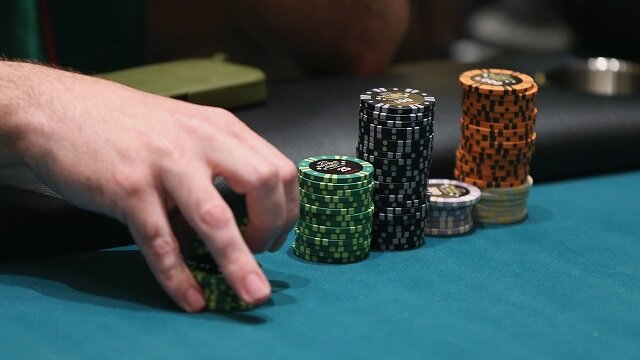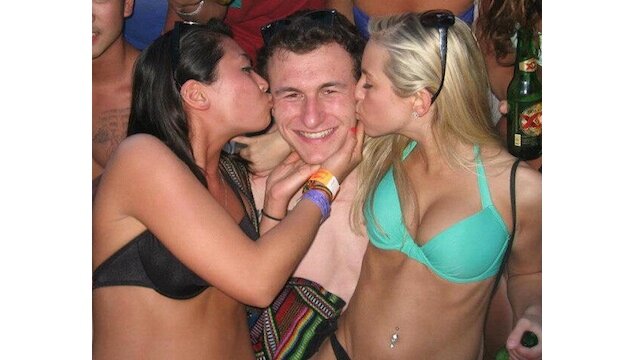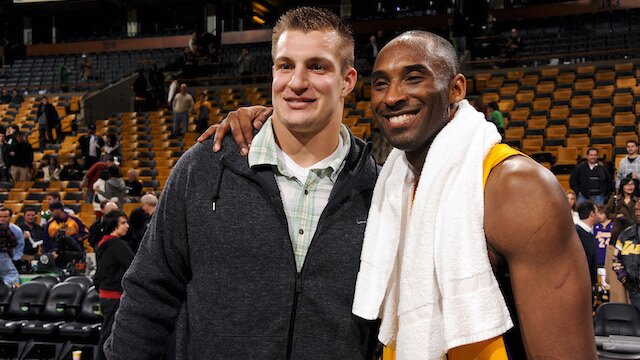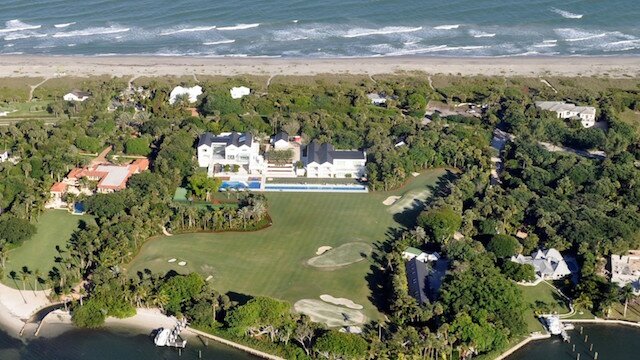The Little League World Series Is A Fairy Tale, Literally
The Little League World Series is always presented as a fairy tale. Each August, ESPN and ABC show us the highs and lows of 16 Little League All-Star teams. Each team has clawed its way to the top of its respective region. We learn all kinds of useless information about these kids as we watch them. Then, love ‘em or like ‘em (because who would hate a 12 year old), a winner is crowned and everyone goes home. The fairy tale has ended, and we all have fond memories of the classic August tournament that is the Little League World Series (LLWS).
But I would like to suggest that most viewers of this event are watching just that, a fairy tale of a baseball tournament. The classic tournament is not playing real baseball, only a mythical version of the true game. This game is so flawed and skewed, that when people learn of its travesties they shake their heads in disgust. But wait, you say, Little League baseball has flaws? It’s skewed?! Heresy! How can I even come close to degrading these players! After all, they work so hard, and they are just kids. It’s all for the children, isn’t it? Far from it. This is a product packaged for you by ESPN and ABC, but it is not real baseball.
Let’s start with the pitchers. According to the Little League website, “The pitching distance for divisions of baseball for 12 year olds and below is 46 feet.” We all know that the pitching distance for high school and up is 60 feet, 6 inches. I am not arguing that 12 year old kids should pitch from the major league length, however, 46 feet is too close. One of the tools that ESPN uses during a game is a graphic after each pitch that shows the viewer how fast the pitch would relate at the pro level. For example, a 74 mph pitch from 46 feet would equate to a 96 mph pitch in the major leagues. If we take these ratios and extend them to the size of the pitchers, we can see the skewed proportions. For example, the tallest player in this year’s LLWS (that I know of) is 6-foot-2. He is pitching from 46 feet. If he were pitching from 60 feet, 6 inches and his height was proportional to the distance, he would be over eight feet tall! Is that realistic? Not even close. I have found other pitchers that stand 5-foot-10, but it seems that 5-foot-6 is a more reasonable size for a LLWS pitcher. At this height, it would equate to a 7-foot-2 pitcher. A fairy tale. A more reasonable pitching length might be 50 feet 6 inches, or even 54 feet. If we figure in arm development with the additional pitching length, the ratios become much more realistic. And here is the main problem with Little League — most 12 year old players across the nation pitch from a greater distance than 46 feet. But more on that later.
Since we are here, let’s stay with the pitchers. How many times have we seen a pick-off move from these pitchers? How about a pitch-out? How about a pitch from the stretch? How many times have we ever seen a LLWS pitcher balk? Probably zero, because there is almost no stealing in Little League. The Little League rule is that a baserunner can steal after the ball crosses the plate. Baserunners cannot even lead off. Quite frankly, Little League baserunners look like softball players getting ready to leave the base when the ball is hit. Why? Why take baserunning out of this game for 12 year old boys? Is it too complicated? Does it affect the pitcher, catcher and infielders negatively if they are required to worry about a baserunner? Welcome to the big leagues boys. Yes, it would complicate the game, but again, most 12 year old players across the nation must deal with baserunners that lead off and steal bases.
Well what about the catchers? If there were “open bases,” (a term used for baserunners leading-off and stealing bases versus “closed bases” where there is no leading-off or stealing before the ball crosses the plate) wouldn’t that put too much pressure on the catcher? He would have to throw the ball down to 2nd or 3rd to attempt to prevent a baserunner from stealing. Also, if there were “dropped third strikes,” the catcher would have to catch the third strike or put the runner out, just like in the majors. The LLWS catcher only has to catch the ball, and sometimes (dropped third strike) he doesn’t even have to do that. His arm strength, quickness and release time are only tested when there is a short bunt. All that other baserunning stuff is too complicated for 12 year old kids, isn’t it? Once more, most 12 year old players across the nation must deal with these issues as catcher.
If the catcher had to deal with “open bases,” wouldn’t the infielders also have more responsibility as well? Yes. It’s that simple, yes they would. And they do it all of the time. It’s called real baseball; it is the true game. Stay with me, and I will let you know where to find real baseball, but first I have one more issue.
The biggest problem is the actual little league field. The little league field is incredibly small. For example, the distance to the fences for Little League baseball are listed this way on the Little League website, “the following distances are recommended: baseball, 12-year-olds and below, 200 feet.” The distance to the walls at Howard J. Lamade Stadium in Williamsport, PA, where the LLWS is played, are a scant 225 feet. This place was built for home runs, and in fact, there was recently a game where the only runs were scored on home runs. The outfield is so small, and the players are so big that either there are no gaps or they are very small. While I will admit that outfield depths change with each field, and indeed, “no two fields are alike,” I can also report that one nationally recognized tournament will hold the championship game, as well as most of the other games, at a field that is 268 to left, 285 to center, and 245 to right. Not only do you have to hit it farther for a home run, these lengths require real athletes in the outfield that know how to play balls and can throw from farther distances.
And finally, the length of the base paths. In the LLWS, these 12 year olds play on an infield that is only 60 feet between bases. I recently saw a play on ESPN where a third baseman fell as he stopped the ball, and then threw the batter out at first while he was still on the ground. Really? He threw the ball maybe 80 feet, and it was a good play, but let’s look at some facts. Most youth baseball leagues in the United States play 7 and 8 year old, “Coach Pitch” baseball on fields that have 60 foot bases. I have seen, with my own eyes, 8 year old players make that throw. For Little League Baseball to allow these 12 year olds to play on the same size field is a travesty. Most players this age play on 70 foot bases.
So what I am saying is this, Little League is not real baseball, and it is not played on a properly sized baseball field. Actually, it is a leftover from the 1960s and 70s, and the main reason that anyone cares about the LLWS is ESPN/ABC. That is it. Most people I talk to understand the argument, but at the end of the day, most continue to watch the LLWS games because they cannot see the “true game.” But oh, there is a true game.
What is “real” youth baseball? There are many forms of it. There are many different leagues and organizations that players play in. Some of the biggest ones are AAU (Amateur Athletic Union), Super Series Baseball of America, NABF (National Amateur Baseball Federation) and USSSA (United States Specialty Sports Association). The top 12 year old teams from these organizations play a tournament called the National Youth Baseball Championship (YouthMajors.com) in Memphis, Tennessee at the end of August; they play real baseball. This year, the quarterfinal, semifinal, tournament all-star and final games can all be seen on the CBS Sports Network between Aug. 24th and Aug. 26th.
One more note on these other organizations. They can be called “select” and “open” baseball organizations. Some fans may look at this and say that this is not the spirit of league baseball. Little League is supposedly a more true organization. However, a five minute internet search reveals that most of the players on the LLWS American Teams participated in select style tournaments, and some even as a team. Also, most of the players have played on multiple select teams for many seasons. These players have played real baseball. Now they are forced to play under Little League rules. Sad.
Real baseball, or the true game, is available for these 12 year old players. It is also more popular than Little League, but ESPN/ABC have fairy tale baseball that they would rather show on their networks. If you want to see the kids play, check out the National Youth Baseball Championship (YouthMajors.com) in Memphis, Tennessee on CBS Sports Network. That’s where the real baseball is found. Leave the fairy tales to the story books, and invest your time in a product that is true to the game and worth watching.
Steve Crone is a writer for www.RantSports.com. Follow him on Twitter @Cronetexas, “Like” him on Facebook or add him to your network on Google.
15 Most Exciting Athletes in Sports Today
We watch sports to entertain us and take us away from everyday life. These 15 electrifying players are great at doing exactly that for us. Read More
Introducing The 2014-15 Illinettes Dance Team
Here are hot photos of the 2014-15 Illinettes Dance Team. Read More
Introducing 2014-15 Georgia Dance Dawgs
Here are photos of the 2014-15 Georgia Dance Dawgs. Read More
Deflate-gate and 15 Pro Sports Teams That Cheated
There will always be people in the sports world looking outside the rules for that extra edge. Read More
15 Hot Instagram Photos of Hannah Stocking
In honor of Klay Thompson's record-setting performance, here's 15 hot Instagram photos of his girlfriend, Hannah Stocking. Read More
Hot Photos of Soccer WAG Viktoria Varga
Graziano Pelle is lighting up the Barclays Premier League, while these photos show that his girlfriend Viktoria Varga is lighting up the internet. Read More
20 College Sports Teams With Epic Tailgating
These 20 schools do it right. When it comes to tailgating, these college sports teams know exactly what they are doing, and have been known to throw an epic tailgate. Read More

Female Athletes Who Belong in Super Bowl Ads
If we had a choice, all of these gorgeous female athletes would be in Super Bowl XLIX commercials. Read More
Hot Photos of NFL Cheerleaders at 2015 Pro Bowl
Here's a look at hot photos of the NFL cheerleaders representing their team at the 2015 Pro Bowl. Read More
Athletes You’d Love to Go to Vegas With
Some athletes are known as party animals off the field. Which of those athletes would be the most fun to take with you to Las Vegas? Read More

Athletes You Want to Have at Your Super Bowl Party
Any successful party has to have a good guest list of family and friends, but what if you could invite your favorite athletes to come too? Read More

Athletes Whose Houses You’d Love to Hang Out At
One of the major ways athletes show off how much they make is with their insanely lavish mansions. Here are 20 athletes with houses you would love to hang out at. Read More










 @Cronetexas
@Cronetexas 












